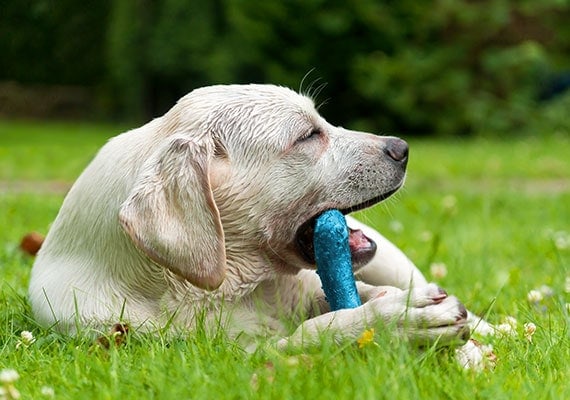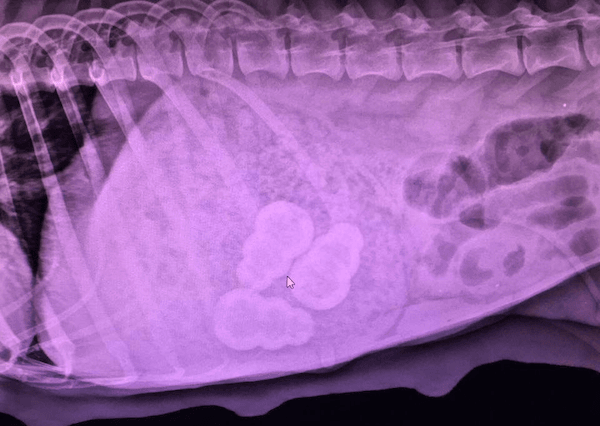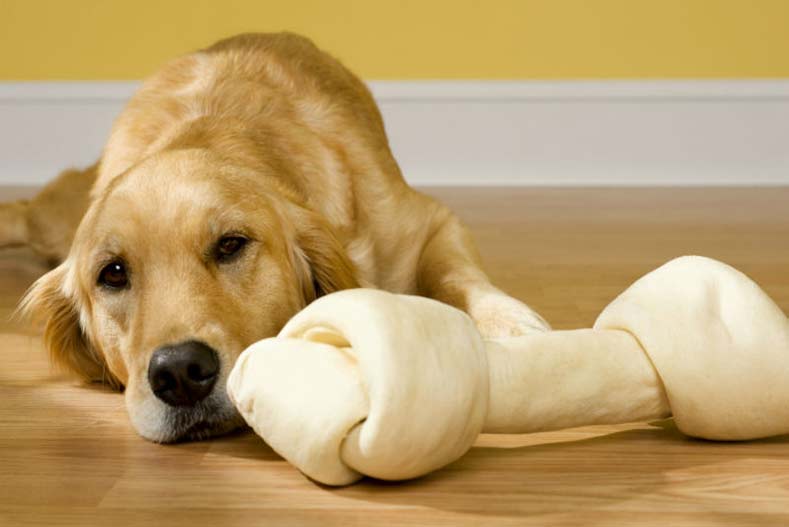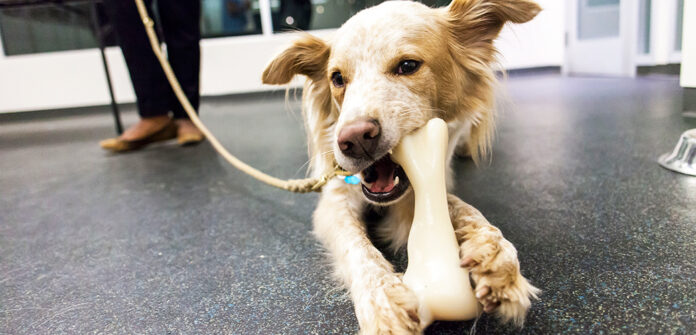Last Updated on February 14, 2024 by Fumipets
Navigating Dog Chews: Identifying Popular Yet Potentially Hazardous Options
Ensuring your canine companion has a safe and enjoyable chewing experience is a crucial aspect of responsible pet ownership. While dog chews are often considered a necessary and beneficial part of a dog’s routine, it’s essential to be aware that not all chews are created equal. Some popular options may pose hidden dangers to your furry friend.
In this guide, we’ll delve into the world of dog chews, highlighting those that could potentially be hazardous and exploring safer alternatives for your beloved pet.
Dog Chews
Chewing is a natural need and requirement for dogs. It’s their method of learning about the world around them. Chewing is beneficial to dogs in a number of ways. Chewing relieves discomfort in teething pups, much like it does in newborns. Chewing is a good way for older dogs to maintain their jaws strong and their teeth clean.
Some dogs chew only for the sake of chewing. Chewing, on the other hand, may be a means for dogs to process and release tension, irritation, or boredom. Regrettably, they aren’t always adept at selecting the greatest foods to chew on. This is where you enter the picture.
It might sometimes seem like there are as many sorts of chews and chew toys as there are dogs to chew them, just like anything else. Everyone has a particular choice for their dog based on their own experiences, good or bad.
There is always something potentially harmful about everything in our dog’s world — or ours, for that matter. I’ve always been trained to share both my good and negative experiences, as well as my expertise, throughout my life and profession as a veterinarian.
Knowing about these possible hazards and risks might help people make decisions that are best for their dog and lifestyle. If you want to keep your dog safe or at least reduce the danger of veterinary emergency or dental bills, you should avoid certain chews and chew toys. Even if you decide to offer your dog the following chews and toys, it’s always vital to be aware of the hazards and risks that come with them. “Forewarned is forearmed,” is a statement I’ve always appreciated.
The dog chews I’m going to talk about in this post are really popular. Despite the fact that they all pose a health risk, they may be obtained at numerous pet stores and online. Many treats, toys, and chews aren’t designed with veterinarians or take veterinary ideas into consideration since the pet sector isn’t well-regulated.
While I appreciate that many dog owners may say that their dogs have never had issues with certain sorts of chews in the past, or that they have never heard of dogs having difficulties with a specific chew, “Before” and “haven’t heard” are the essential terms here. Every dog is unique, and life may change in a second – unfortunate events can alter everything.

You Shouldn’t Give Your Dog Chews and Chew Toys
Different strokes for different people, remember! I’ll readily admit that these toys will not be an issue for every dog. However, I believe it would be improper if I did not at least disclose the dangers with you. Then you and your dog can determine what is best for you. If a dog is permitted to chew on the following items and goods, the chances of moderate-to-severe problems increase dramatically.
When examining the safety of dog chews, I check for the following:
Hardness – If the chew is harder than the teeth, tooth injuries are a possibility.
The chance of indigestible pieces falling off and being eaten if there is an obstruction non the gastrointestinal system.
A choking danger exists. The chucks become caught in the trachea or esophagus and don’t make it to the stomach or intestines, as in the previous example.
As veterinarians, we’ve seen firsthand the difficulties that may arise from dogs being damaged by something as apparently innocuous as a chew toy, from shattered teeth to intestinal blockage and even death. Check out our post How to Choose Safe Dog Chews for additional information on selecting the right chew toy for your dog’s chewing style.
Bones
Now, this is a contentious subject… but let’s go there! If you spend enough time online, you’ll find lots of blogs and websites that suggest it’s OK to feed your dog bones as long as they’re raw and of a certain sort. (Fortunately, almost everyone believes that cooked chicken, turkey, rib, and other “brittle” bones aren’t safe since they splinter easily and cause stomach discomfort or puncture.)
On the one hand, some folks may enthusiastically promote bones, stating that raw, substantial bones (such as beef knuckle bones) can give hours of safe, natural chewing. They often point to the “naturalness” of dogs gnawing on bones, citing the fact that wolves and dogs in the wild consume and chew through bones. That’s somewhat accurate, but only if you overlook the following bone facts:
Bones Splint
Bones can and do split, whether cooked, uncooked, solid, or hollow, and they’re still strong enough to shatter teeth.
Constipation
Bone pieces may pass all the way through the small intestines and end up in the colon, causing constipation.
Choking
If a fragment of bone breaks off and lodges in the oesophagus on its route to the stomach, it may cause problems. Bone shards may penetrate the throat and oesophagus. The region might enlarge once stuck, making breathing difficult.
The FDA has even issued a bone warning to pet owners. The examples above are only a few of my unfortunate experiences with bones as dog chews, all of which had happy ends. That isn’t always the case, however. Because of the harm and destruction that chewing bones may do, I will never encourage or advise against using bones as a chew toy for dogs, whether cooked or raw.
Yak Chews, Hard Cheese Chews, and Blocks
Cheese shouldn’t be an issue for dogs, right? Aside from mild lactose sensitivity, right? It surely can after it’s been processed into a rock-hard “block” or “bone.” Cheese blocks and bones, particularly yak cheese rewards, are sometimes much too hard for frequent gnawing and may result in a dog’s teeth breaking. The Ecokind Yak Cheese Chews failed the “thumbnail test” in my personal testing (a good chew should be soft enough that it will give if you press it with your thumbnail).
Stick to modest quantities of actual cheese, such as string cheese, if you wish to offer your dog cheese. Choose freeze-dried cheese snacks for a less smelly choice in your reward pouch, which may be a terrific high-value treat during training.
You might try warming the hard cheese chews in the microwave to soften them if you still want to offer them to your dog. During my testing, though, I tried this and it didn’t make it any softer.
Cow Hooves
Cow hooves were formerly popular as dog chews, but they seem to have fallen out of favour. Of course, you can still locate them with relative ease. Cow hooves, like bones and other hard chew toys, have the potential to shatter your dog’s teeth or splinter, resulting in puncture injuries to the mouth or digestive system.
They may become wrapped around the lower jaw, immediately beneath the lower canine teeth, due to their circular form. As you can expect, this makes most dogs nervous. Unfortunately, your dog will almost always need to be anaesthetized by their veterinarian in order for the hoof to be removed from their mouth.
Deer Antlers
Antlers are usually at the top of the list of most popular dog chews. Pet owners often see them as “naturally harvested” and “sustainably harvested” (elk and deer shed their antlers naturally). Have you ever seen a battle between a buck and a bull elk? To say the least, it’s intense.
Antlers are tough enough to resist the power of another deer’s antlers in combat, therefore they’re tough enough to shatter your dog’s teeth.
Antlers, like bones, may shatter and splinter. Splinters might end up in your dog’s mouth, throat, or intestines.
Even die-hard antler collectors admit that antlers come in various grades. They talk about how these lesser grades might be dangerous for pets. They usually only support Grade A antlers since they are “softer” and “fresher.”
Nylabones, also known as Nylon Chew Toys, are a kind of chew toy made of nylon.
Hard plastic and hard nylon chew toys like Nylabones, like many of the other chews we’ve examined, might be too hard for your dog’s teeth. Because these toys have little to no “give,” they have resulted in several tooth fractures.
It’s too hard for your dog’s teeth if you can’t imprint the toy with your fingernail.
To make things worse, a good chewer may pull bits of plastic off a Nylabone and ingest them, resulting in a digestive blockage or, at the absolute least, diarrhoea. When fragments of these break off and lodge in the stomach, the body tries to digest them. Pancreatitis may result from this alone.
Nylabones are poisonous and may induce seizures, according to some sources. These assertions don’t seem to be very credible. As I previously said, the actual hazard is harm to your dog’s teeth or digestive tract.
Pig Ears
Another popular reward among dog owners is pig’s ears. Pig ears are heavy in fat and may give some good chewing time. Foods heavy in fat may lead to obesity, which has its own set of issues for your dog. High-fat diets may also induce gastrointestinal problems, as well as pancreatitis (which can be fatal for some dogs). Your dog may have vomiting, diarrhea, gastrointestinal discomfort, lethargy, and potentially hospitalization as a consequence of this.
Some pig ears, particularly those from an untrustworthy source, may be coated with toxic chemicals. Bleach is one such chemical that has been discovered. Furthermore, carcinogenic coatings have been discovered on certain smoked pig ears.
Pig ears may also be a breeding ground for a variety of germs (such as salmonella). Furthermore, if your dog is prone to tearing off huge portions and swallowing them whole, pig’s ears might constitute a choking danger or cause intestinal blockages. Unfortunately, they don’t always show up on an x-ray when they produce a blockage, which may lead to a misdiagnosis and a delay in treatment.
Finally, pig ears may leave a greasy film on your carpet and furnishings, which may or may not be a concern for many pet owners.
Ice Cubes
While ice cubes aren’t really a chew “toy,” many owners offer them to their dogs to gnaw on when it’s hot or their puppy is teething. Unfortunately, ice cubes, like bones, antlers, hard nylon chew toys, and other hard chews may cause your dog’s teeth to shatter. They may also cause choking in dogs, particularly if your dog’s teeth are broken or missing. You don’t have to leap upon a dropped ice cube before your dog gets to it, but giving ice cubes to your dog to chew isn’t a good idea.
You may have heard that frozen water promotes bloat in dogs, however this is a load of hogwash. In dogs, ice water does not produce bloat.
Sticks
Sticks may be a fast method to stop your dog’s good time, even if they seem to be a free and easily accessible chew and retrieve toy. They often result in painful and even fatal puncture wounds to the lips, eyes, abdomen, and even the heart! Sticks are not free toys for dogs, and they are quite harmful to them, as we’ve discussed in many previous articles on Preventive Vet.
Sticks should never be used for fetch or chew toys to safeguard your dog’s health and safety, as well as your heart and wallet.

Caution When Using Chews
Sticks that are used to bully others
Many dog trainers advocate bully sticks because they may be particularly useful during puppy teething times while still being high-value enough to engage destructive chewers. Veterinarians are divided on whether the possible hazards are worth the potential advantages. Knowing the hazards, like with other dog chews, can help you make better judgments about what you offer your dog to chew on.
Bully sticks are a choking threat, even though they aren’t normally hard enough to damage broken teeth (particularly because they soften when a dog chews on them). The bully stick may get caught in your dog’s throat, particularly when it grows smaller as they eat.
Bully sticks are so valued and delectable to some dogs that they will attempt to eat them whole. This might result in a gastrointestinal blockage, which may need surgery to correct.
Bully sticks are high-protein chews that might induce diarrhea due to their richness. Bully sticks should not be chewed by dogs with renal problems, since they are normally on a protein-restricted diet.
Invest in a bully stick holder if you decide to use bully sticks with your dog. Preventive Vet’s on-staff certified dog trainer prefers the Bully Grip. The chance of your dog swallowing the bully stick whole or swallowing and choking on the stick when it is chewed down to a size small enough to swallow is reduced by using a holder. Make sure the holder you’re using has a good grip on the stick; neither you nor your dog should be able to pull it out.
Choose high-quality bully sticks (the odour-free varieties are the best). Bully sticks that have been used may contain harmful germs, so be cautious to discard them after each usage. Bully sticks are rich in calories and should be used sparingly by overweight dogs.
Rawhide
Rawhides, which are widely available and very affordable, might be a nice chew alternative for certain dogs. Rawhides are chewed by many dogs without incident. Some dogs, however, get rawhide stuck in their windpipes, stomachs, or intestines, resulting in choking or digestive blockage.
If your dog chews the rawhide instead of chewing off and gulping huge pieces, they should be OK (and may even get some teeth-cleaning benefits). These are absolutely not a healthy chew alternative for your dog if they merely bite off bits or attempt to ingest it whole.
If you’re going to utilize rawhide, stay away from the ones with knots at the end. If the knots are broken, they may cause significant choking and intestinal blockages. They are also not suggested for dogs with a history of gastrointestinal problems or pancreatitis since they might be difficult to digest.
How to Tell whether a Chew Toy or Edible Chew is Safe for Your Dog
The above chews and chew toys are some of the most popular items for your dog to chew on, but as you can see, they may also be rather harmful. They aren’t the only chews and chew toys that are harmful to dogs. And new chew toys for dogs are being released every day. It’s difficult to keep track of everything!
How to Check the Safety of Your Dog’s Chew
Put all of your dog’s chews and chew toys through the “tests” below to see whether anything is likely to be safe for your dog to chew on:
Hardness: The thumbnail test should be used. If you press the toy with your thumbnail and it doesn’t “give” a little, it’s probably too hard for your dog and could break their teeth.
Softness and Durability: The toy should not be so soft or poorly made that your dog can chew it apart and swallow pieces, chunks, or the stuffing inside.
Coating: It should not be coated or treated with flavorings that can cause digestive upset or support bacteria growth both before and during chewing (for example, the coating on pig’s ears).
Size and shape: It should not be so small that it chokes your dog. Certain shapes, such as circles or rings, make it easy for your dog’s tongue or muzzle to get stuck in them. It also shouldn’t be too large for them to strain or injure their jaw while working on it. This can be challenging in homes with multiple dogs of various sizes, but it’s critical to consider the size of the toys you bring into your home in relation to the different-sized dogs you may have.
Washability: Ideally, you should be able to clean and disinfect it in the dishwasher, washing machine, and clothes dryer on a regular basis.
It should be able to provide hours of chewing entertainment and distraction, either because it will last a long time, because you can stuff it with treats/food, or because your dog enjoys playing with it.
Chewing Style of Your Dog: Each dog has its own “chewsonality.” Some prefer to inhale and/or destroy, while others prefer to nibble. Knowing your dog’s chewing style can help you choose the right chew. In How to Choose Safe Dog Chews, you’ll learn how to figure out what kind of chewer your dog is (as well as get recommendations for the best chew toys).
Picks from a Preventive Vet for Safer Dog Chews
It’s time to admit something: a large portion of the Preventive Vet team is guilty of spoiling our dogs. We’re a little embarrassed to admit how much of our available space is taken up by our dogs’ favorite toys, nummies, and other embarrassing euphemisms.
The good news is that this experience has given us a lot to consider when it comes to recommending toys based on their safety, durability, and overall quality. Here are a few of our dogs’ favorites, which we think you’ll enjoy as well.
Please keep in mind that even though these chews and “stuffable” toys are safer and more durable, you must still exercise caution.
Before giving your dog a chew, inspect it for any damage or wear.
Do not expose these toys to direct sunlight or extreme temperatures. It has the ability to weaken and degrade them more quickly. While they may appear to be adequate, they are not structurally sound.
Look for any signs of wear, chips, or fractures in your dog’s teeth.
Keep an eye on your dog while they are playing with toys and chewing on them. Allow them to take a break from chewing if they become agitated or are chewing too aggressively. This may help prevent a tooth fracture or a large piece of food from breaking off and choking or obstructing them.
Consider establishing a chewing schedule. Even the safer toys mentioned above can irritate your dog’s gums, so taking a break from them may be beneficial. Also, if you add treats to toys like the Kong, you should keep track of how many extra calories your dog is consuming.
Make sure to clean the toys on a regular basis.
It’s All About the Size
A word of caution about choosing the right size toys for your dogs, especially if you have multiple dogs of various sizes.

The three snowman-shaped objects in the image’s center are Kongs hidden inside the dog’s stomach! They ended up there not because the dog’s owner purposefully gave their dog the wrong-sized Kongs, but because their child failed to keep an eye on the puppies while they were playing with their food-filled Kongs!
Mom might have decided that her puppies were having too much fun and wanted to join in. Or, as is so often the case, the kids simply left their mess for mom to clean up… and clean up this mom did! These three Kong toys had to be removed from her stomach, which required surgery. Although she was unharmed, the cost of surgery was an unwelcome consequence for the family.
Alternatives to Rawhide
As a rawhide substitute, I gave my small dog Wild Eats Water Buffalo Cheek Chips. Their small size makes them ideal for small dogs, but I wouldn’t recommend them for larger dogs due to the risk of choking.
Water Buffalo Cheek Chip Chew by Wild Eats
You can find it at:
Earth Animal No-Hide Chews are a team favorite at Preventive Vet for a rawhide alternative. They come in a variety of sizes, making it easier to find one that is less likely to cause your dog to choke. They are also more digestible than traditional rawhide due to the ingredients used.

Earth Animal No-Hide Chews are available at the following locations:
Dental Chews Virbac C.E.T. Enzymatic Oral Hygiene Chews are made from carefully selected hides and contain no artificial coloring. These chews also contain glucose oxidase, a potent and beneficial enzyme that protects your dog’s teeth by breaking down the sugars that disease-causing bacteria feed on. You can get them from your veterinarian or order them online.
When it comes to our pets, I believe we all have different ideas about what they should be fed, what treats they should receive, how much they should weigh, and so on. Furthermore, each pet is unique, and what works for one breed or size of dog may not work for another. Each dog is an individual who exists in their own world. You are the expert on your dog and what works best for them (and you).
The rationale for ‘warning labels’ on items is that firms want to share other people’s unpleasant experiences in order to prevent others from suffering the same fate. While we may never agree on everything, it never hurts to be open-minded and listen to others. You never know when fresh information may come in handy for you or someone else.
Sharing our personal and professional experiences may help others learn new things and give a fresh viewpoint (preferably in a safe manner). This, I suppose, is why individuals give suggestions while working on projects or cooking, so that others might avoid the difficulties they have encountered and just enjoy the benefits of what they are doing.
Q&A: Unraveling the Risks in Popular Dog Chews
What are some popular dog chews that may pose risks?
Rawhide, certain synthetic chews, and cooked bones are examples of popular dog chews that can potentially be dangerous. Rawhide, in particular, may lead to digestive issues and choking hazards.
Why is rawhide considered risky for dogs?
Rawhide, often treated with chemicals and prone to splintering, poses a choking hazard and may cause digestive blockages if large pieces are ingested. Additionally, the potential for contamination during processing raises health concerns.
Are synthetic chews always safe for dogs?
Not necessarily. Some synthetic chews, especially those with hard or abrasive surfaces, can cause dental issues or lead to intestinal blockages if ingested in large pieces. Always supervise your dog with any chew to ensure safety.
Can cooked bones be harmful to dogs?
Yes, cooked bones, especially those from poultry, can splinter and cause severe damage to a dog’s digestive tract. It’s safer to opt for raw, meaty bones that are appropriate for your dog’s size and chewing habits.
What are safer alternatives to potentially risky dog chews?
Natural alternatives such as antlers, bully sticks, and certain types of raw bones can provide a safer chewing experience for dogs. Always choose chews that match your dog’s size, chewing style, and dietary needs.


















